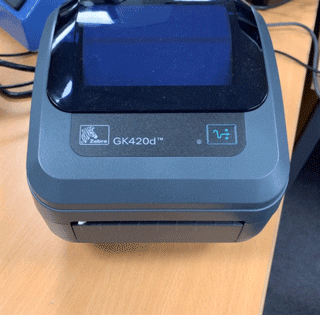1 VectorPro™ Software and Vector Firmware Release Notes
2 Introduction
VectorPro™, VectorPro™ MT and VectorPro™ Lite are all registered trademarks of Mecmesin Ltd.
VectorPro is a dedicated software solution used for the programming and acquisition of data from a range of Mecmesin test stands and instruments.
The software enables users to capture data from Mecmesin test stands and instruments, perform calculations and export/report calculations and test data. In addition, VectorPro can provide secure audit trails and user management systems. Operation sequences can be constructed by intuitive drag-and-drop control, with test editing including versioning control for full traceability. The test attributes system can be used to store information such as lists, notes and images.
3 Summary of Improvements
This document covers the changes and improvements to the following products:-
- Firmware functionality in the following stands:
- Vortex-dV
- All MultiTest-dV models
- All OmniTest and MultiTest-dV(u) models
- VectorPro software functionality, with the following experiences:
- VectorPro Lite
- VectorPro MT
1) They are installed with firmware version 3.0.2 or later and
2) It’s a MultiTest-dV Mk2 model (from December 2017 onward), or later
3) VectorPro MT dV(u) Software Kit (840-425) is present
4 Contents
- 1 VectorPro™ Software and Vector Firmware Release Notes
- 2 Introduction
- 3 Summary of Improvements
- 4 Contents
- 5 Vortex-dV and MultiTest-dV Firmware Change Log (within the test stand)
- 6 VectorPro Lite Function Change Log (Applicable to VectorPro MT also)
- 7 OmniTest and MT-dV(u) Firmware Change Log
- 8 VectorPro MT Function Change Log
5 Vortex-dV and MultiTest-dV Firmware Change Log (within the test stand)
Major Feature - MultiTest-dV test stands now incorporate the necessary hardware in a new rear panel to allow an interlocked guard to be fitted. A range of standard interlocked guards are available for use with the MultiTest-i, -xt and -dV stands.
Major Feature - Home speed is now configurable within the jog settings.
Benefit: This will improve set-up time as you jog slowly to the test specimen but return rapidly to the Home position.
Major Feature - Ability to set a timeout control when holding a load in jog mode. The applied load must be > 25% of test stand capacity for the timeout function to be active.
Benefit: Allows the applying of load during a calibration method without stressing or overheating the motor.
6 VectorPro Lite Function Change Log (Applicable to VectorPro MT also)
Major feature - The VectorPro operating manual is incorporated inside the software itself and is valid for software up to version 6.1.0.0. All later software versions will include a link to the operating manual stored at online versions of VectorPro manuals.
7 OmniTest and MT-dV(u) Firmware Change Log
Major Feature - Home speed is now configurable within the jog settings.
Benefit: This will improve set-up time as you jog slowly to the test specimen but return rapidly to the Home position.
Major Feature - Ability to set a timeout control when holding a load in jog mode. The applied load must be > 25% of test stand capacity for the timeout function to be active.
Benefit: Allows the applying of load during a calibration method without stressing or overheating the motor.
Major Feature - Incorporation of VIC 3 (the main processor PCB of the test stand) and ELS 2 (the PCB for the Enhanced Load Sensor).
Benefit: These together give improved stability and 1:50000 resolution to allow calibration/verification of force to Class 0.5 for test systems in accordance with EN 7500 part 1.
8 VectorPro MT Function Change Log
Major Feature - Additional result option to the Value calculation. This result now gives an X-axis value corresponding to an entered Y-axis value.
Benefit: In a classic force/displacement graph it allows values of displacement to be calculated for any given force value. Useful for testing any material or component where you need to know how far it has moved under a given load.
Major Feature - Addition of 'verify' limits to the formula function.
Benefit: It allows lower and upper values to be specified to determine the 'Pass'/'Fail' criteria in any formula used to create a result.
Major Feature - Additional 'Number Attribute' to allow the pre and post-test entry of numerical values.
Benefit: When incorporated into the Formula function it allows manipulation of user-defined values or constants... e.g. the mass of a sled to calculate the co-efficient of friction. Alternatively, a simple numerical value can be entered before and after a test sequence.. e.g to weigh a specimen and enter the result before and after a test is run.
Major Feature - The 'Toe Correction' feature is applied post-test to correct the presentation in any strain graph or any result obtained from the data. Note: 'Toe Correction' is a post-test method of compensating a specimen that experiences the effects of 'slack' at the beginning of a test.
'Slack' is defined as an artefact caused by seating or alignment of a specimen when it is first loaded. This slack is not related to any characteristic belonging to the specimen itself. Some test standards such as ASTM refer to this as 'Toe Region'. Others define the use of toe correction to determine a 'zero-deformation point' from which calculations or results are referenced. The 'Toe Correction' is tuned to the specimens mechanical properties and is calculated from its stiffness (Stress vs Strain).
Toe Correction can either be set to Automatic or User Defined in the settings.
Benefit: Improved measurement accuracy due to slack present when initially loading the specimen being compensated. Test results conform to methods described in international standards.
Major Feature - Integration of printer driver for Zebra GK402d thermal label/barcode printer. This is in a fixed format currently. A configurable format is planned for a future release.
Benefit: Allows test result(s) and other user data (operator, time, date etc..) to be printed and affixed to test specimen for clarity and audit purposes.
